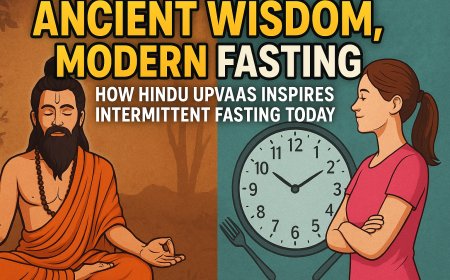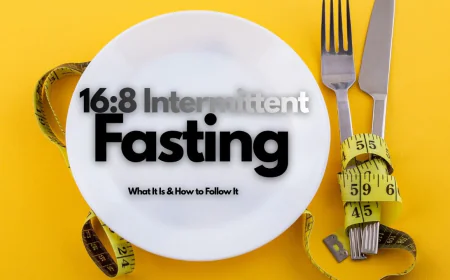Fasting 15 Hours a Day: Benefits, Results & How to Start Safely
Learn the benefits of fasting 15 hours a day, how to start it naturally, and what realistic results to expect. A beginner-friendly guide to sustainable intermittent fasting.

Fasting 15 Hours a Day: Benefits, Results & How to Start Naturally
Fasting isn’t just a health trend anymore — it’s a lifestyle transformation. Among the different fasting methods, fasting for 15 hours a day is becoming increasingly popular for those who want results without extreme restrictions.
But is fasting 15 hours a day enough? Can it help you lose weight, improve your metabolism, and boost your energy levels?
In this blog, we’ll break down the science, benefits, how to do it properly, and everything else you need to know about fasting 15 hours a day — a beginner-friendly and effective intermittent fasting method.
What Is Fasting 15 Hours a Day?
Fasting 15 hours a day means you go without consuming any calories for 15 hours straight, followed by a 9-hour eating window. It’s a milder form of intermittent fasting, often seen as a more sustainable version of the popular 16:8 method.
Example: If you finish dinner at 8 PM, your next meal will be around 11 AM the next day.
How Does 15-Hour Fasting Work?
- Uses up glucose stores
- Switches to burning fat for fuel
- Improves insulin sensitivity
- Triggers cellular repair processes (autophagy)
These processes typically start after 12–14 hours of fasting, so a 15-hour fast allows your body to enter the fat-burning and repair state more efficiently.
Key Benefits of Fasting 15 Hours a Day
- Supports Weight Loss: Reduces eating window and naturally cuts calories.
- Improves Insulin Sensitivity: Helps manage blood sugar for prediabetes and diabetes.
- Boosts Metabolism: Increases norepinephrine for faster calorie burn.
- Encourages Fat Burning (Ketosis): Enters ketosis after 12–14 hours.
- Cellular Cleansing (Autophagy): Cleans out damaged cells, reducing inflammation.
- Enhances Mental Clarity: Stable energy and fewer blood sugar crashes.
What to Eat During Your 9-Hour Eating Window
Sample Schedule (11 AM – 8 PM):
- 11 AM Break-Fast: Greek yogurt + chia seeds + berries
- 2 PM Lunch: Grilled chicken salad with olive oil + quinoa + greens
- 7:30 PM Dinner: Baked salmon or tofu + sweet potato + steamed vegetables
- Drinks: Herbal tea or black coffee (no sugar)
What to Avoid While Fasting
- No calories (milk, juice, sugar)
- No snacks, even if “healthy”
- No alcohol
Allowed drinks: Water, black coffee, unsweetened green tea, apple cider vinegar (1 tsp in water).
Who Should Try 15-Hour Fasting?
- Beginners new to intermittent fasting
- Busy professionals seeking fat loss without gym time
- Women preferring a gentler method than 16:8 or OMAD
- Anyone aiming for slow, steady results
Who Should NOT Do It (Without Medical Advice)
- Pregnant or breastfeeding women
- People with a history of eating disorders
- Diabetics on medication
- Individuals with chronic health conditions
Always consult your doctor before starting any fasting routine if you're unsure.
Realistic Results: What Can You Expect?
| Week | Results |
|---|---|
| Week 1 | Improved digestion, reduced bloating, slight fatigue |
| Week 2 | 1–2 kg weight shift, more daily energy |
| Week 3 | Natural appetite reduction, better focus & sleep |
| Week 4 | 2–4 kg weight loss, visible belly fat reduction |
Sample 15-Hour Fasting Schedules
| Eating Window | Fasting Window | Ideal For |
|---|---|---|
| 11 AM–8 PM | 8 PM–11 AM | Most people (social & work friendly) |
| 10 AM–7 PM | 7 PM–10 AM | Early risers |
| 12 PM–9 PM | 9 PM–12 PM | Late eaters |
Tips to Make 15-Hour Fasting Easier
- Start slow: try 12-hour fast, then build to 15.
- Stay hydrated: sip water throughout fasting hours.
- Distract hunger with walking, reading, or work.
- Break fast gently: avoid overeating at first meal.
- Avoid sugary drinks & processed foods during eating window.
Conclusion
Fasting 15 hours a day is a simple, flexible, and effective method to improve your health, boost weight loss, and feel better — without extreme dieting or complicated rules.
Unlike crash diets, this plan is sustainable, requires no supplements, and can easily fit into your daily routine.
Key Takeaways:
- Triggers fat-burning and cellular repair
- Supports weight loss without starvation
- Easy to maintain—ideal for beginners
- What you eat during your window still matters
Ready to try it? Start tomorrow with a 15-hour fast and give your body the natural reset it deserves.
“If you're just starting out, follow this beginner intermittent fasting schedule by Lean Fasting to ease into the habit and stay consistent.”
FAQs – Fasting 15 Hours a Day
Q1: Is fasting 15 hours enough to lose weight?
Yes, many people lose weight by fasting 15 hours daily — especially when paired with healthy meals and lifestyle habits.
Q2: Can I drink coffee during a 15-hour fast?
Yes — black coffee without sugar or cream is fine and may help suppress appetite.
Q3: What happens after 15 hours of fasting?
Your body enters fat-burning (ketosis), blood sugar stabilizes, and cellular repair begins.
Q4: Is it better to fast 15 hours or 16 hours?
Both are effective. If 16:8 feels hard, 15:9 is a gentler, more sustainable alternative.
Q5: Can I fast 15 hours every day?
Yes! It’s safe for most healthy adults and can become a long-term eating habit if done correctly.




























